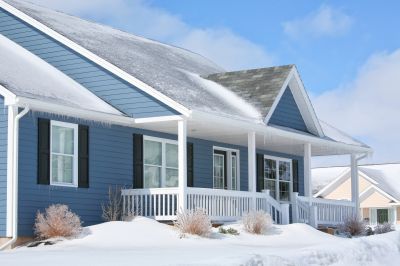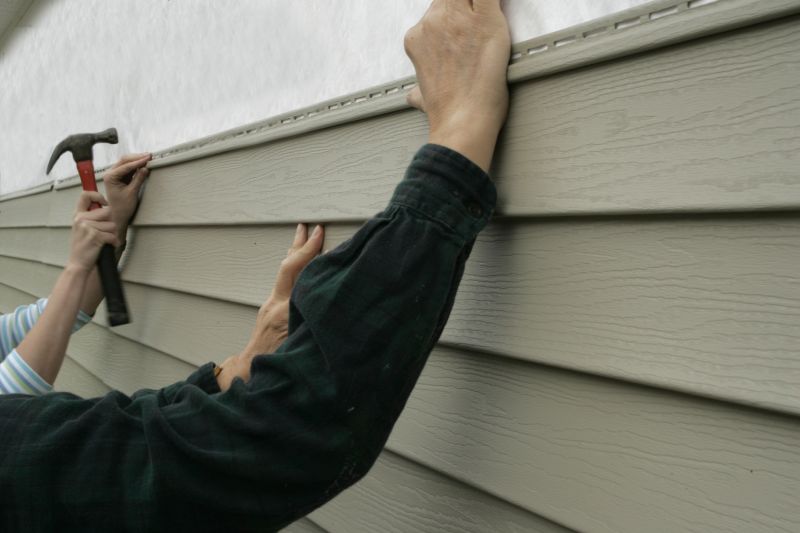Optimal Timing for Siding Services
Siding service can be performed effectively throughout the year, but optimal conditions depend on weather and temperature. The most suitable periods are during mild seasons when temperatures are neither too hot nor too cold, ensuring proper installation and material performance.
Spring offers moderate temperatures and longer daylight hours, making it ideal for siding projects. It allows for efficient work before the heat of summer.
Summer can be suitable if temperatures are manageable, but high heat and humidity may affect installation quality and drying times.
Fall provides cooler weather and less humidity, creating favorable conditions for siding installation before winter.
Winter is generally less ideal due to cold temperatures, snow, and ice, which can hinder installation and affect material integrity.

A crew installing siding during spring's mild weather.

Siding being installed under sunny summer skies.

Workers applying siding in autumn conditions.

Limited siding activity during winter due to weather constraints.
| Season | Ideal Conditions |
|---|---|
| Spring | Moderate temperatures, longer days, suitable for installation |
| Summer | Warm weather, but watch for high heat and humidity |
| Fall | Cooler temperatures, less humidity, good for scheduling |
| Winter | Cold, snow, and ice make installation challenging |
Siding service involves the installation, replacement, or repair of exterior siding materials on buildings. Proper timing ensures the longevity and appearance of siding, reducing the risk of issues caused by weather-related factors. The choice of season can influence the quality of installation, with milder weather providing optimal conditions for materials to adhere correctly and for crews to work efficiently.

A contractor installing siding during favorable weather.

A finished siding installation showcasing quality craftsmanship.

Inspecting siding for damage after installation.
Interested in scheduling siding service? Filling out the contact form can provide more information and help determine the best timing based on local weather conditions and specific project needs.


